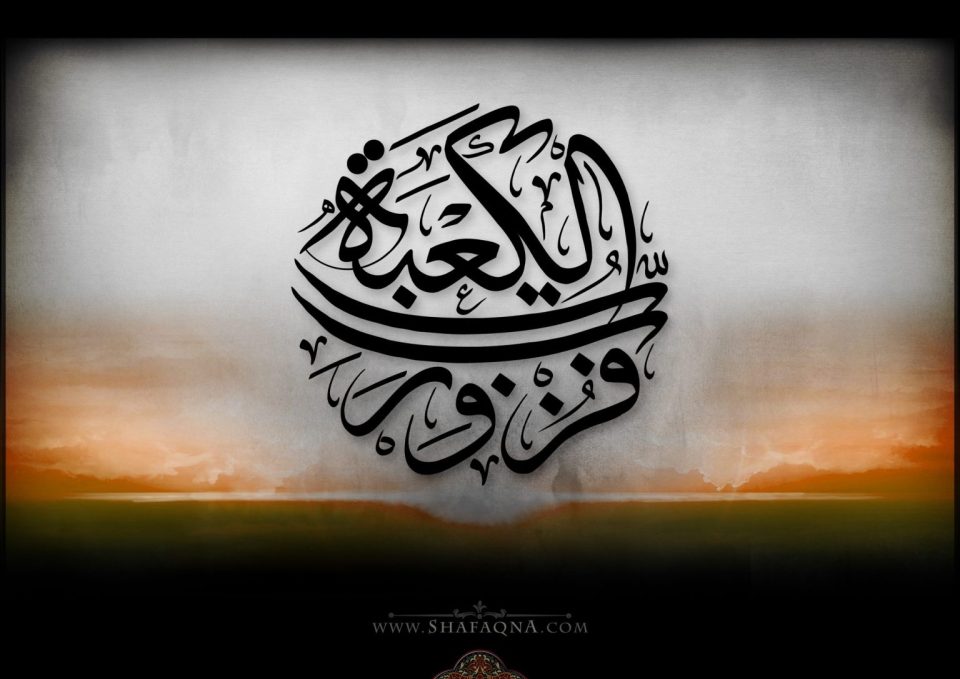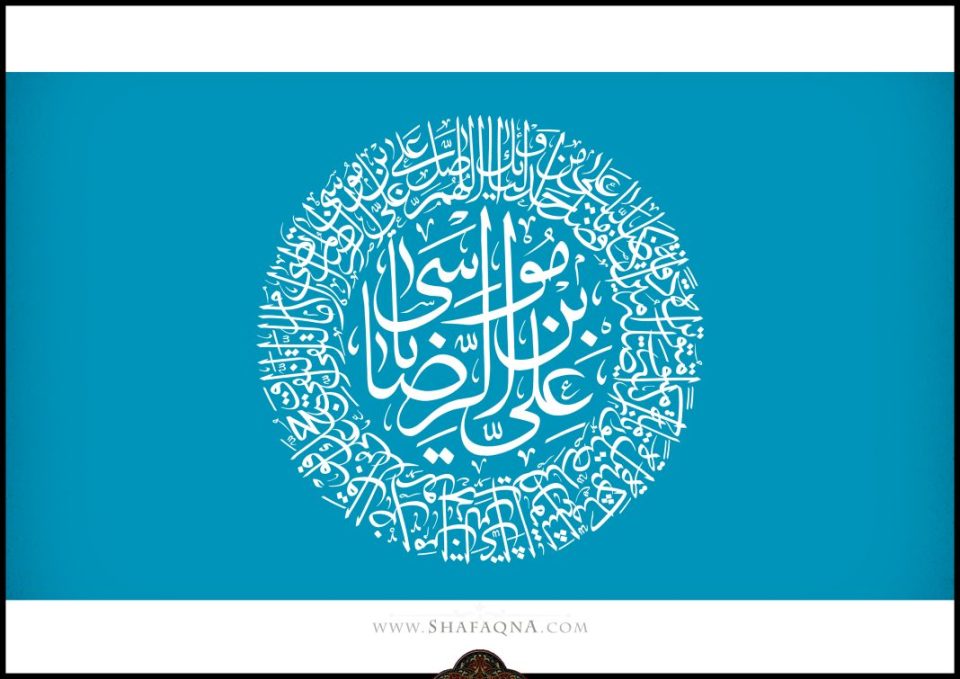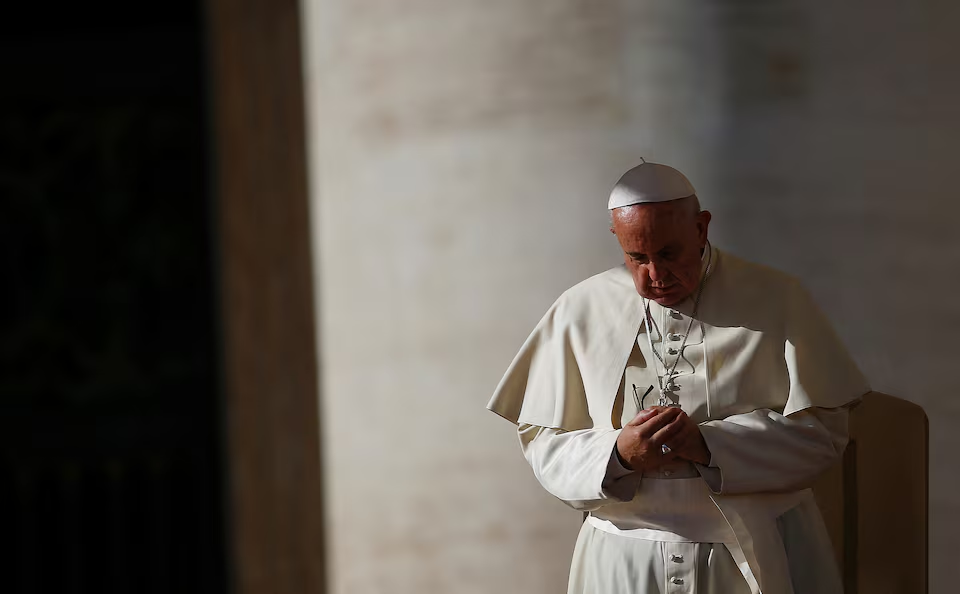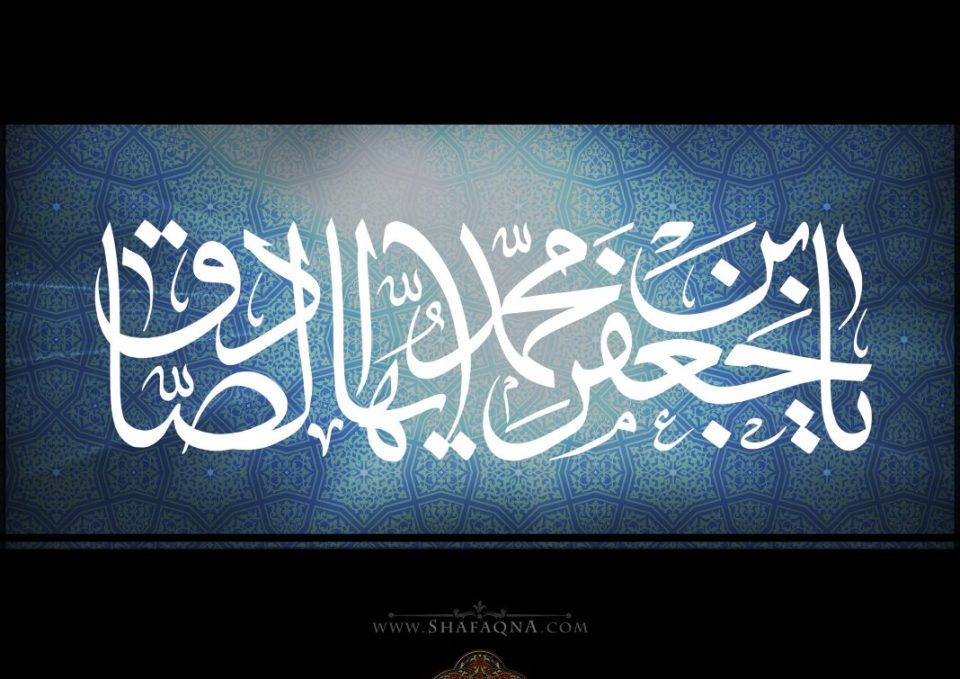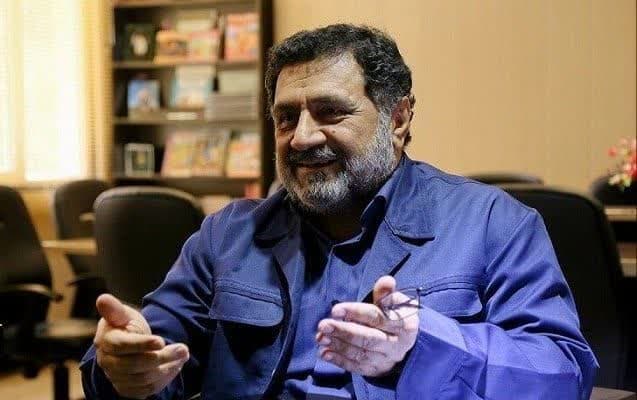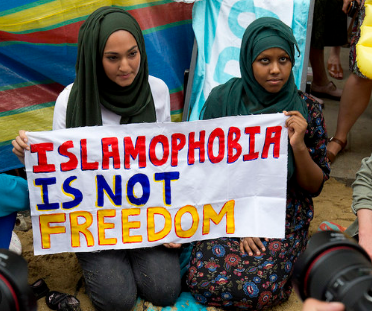The Fourth Imam, ‘Ali Ibn Al Husayn, Zainul Abedeen (as)
The Fourth Imam, ‘Ali Ibn Al Husayn, Zainul Abedeen (as): When the young ‘Ali took the mantle of Imamate, times were hard on the Ahlul Bayt of the Prophet. His is the saddest story of all time. On the 10th of Muharram at the time of Asr Prayers, when his father Husayn (as) was alone in the battlefield ready to do battle, he withdrew to the camp of his ailing son, came beside his bed, woke him and told him that the story of Karbala’ was over, that he was about to go to sacrifice his own life for the cause of Islam.
It was at that time that the father transferred the mantle of Imamate, the spiritual guidance, to his son to lead the Muslim Ummah towards the Right Path.
He was born in Madina some 22 years ago, on 5th Shabaan 38 year of Hijra. In some history books his date of birth is shown as 15th Jamadiul Awwal 38 AH. His mother was Shahr Bano the daughter of Yazdjurd II, the last of the Persian Kings before Islam.
She was taken prisoner when Muslim armies conquered Persia. When she was brought in Madina Imam ‘Ali (as) spoke to her and she embraced Islam and was married to his 2nd son Imam Husayn. (as) She had died after giving birth to her only son. He was only two years old when his grandfather ‘Ali (as) was martyred in the Mosque at Kufa. After that the whole family of the Prophet returned to live in Madina.
For the next 10 years under Imam Hasan (as) as Imam and after his martyrdom, his father Imam Husayn (as) as the Imam, the young ‘Ali was growing in their shadow and watching the workings of the Imamate without the worldly authority. People knew they were the grand sons of the Holy Prophet and followed them by their hearts but outwardly because of the fear of the Ummayad ruler in Damascus, there was very little following of the Ahlul Bayt of the Prophet.
In 60 Hijri when his father Imam Husayn (as) had to leave Madina for Makka and then for Karbala’, he was with him all the time. In Karbala’ all male children of ‘Ali (as) and Husayn (as) were killed except ‘Ali Ibn el Husayn who with providence became so ill that he was unable to participate in the Jihad with his father and survived the massacre.
His life and with that the line of descendants of Husayn (as) survived because the Imamate had to go on. He became the 4th Imam on the 10th of Muharram 61 Hijri. He was taken captive and was brought to Kufa and then to Damascus in chains.
In spite of his illness and humiliating position in front of Yazid the Ummayad ruler, when Yazid addressed him in an insulting manner saying that his father wasted his life by refusing to give the oath of allegiance to Yazid, Imam replied, it was to save Islam. They were wondering how Islam was saved. When time for Azan came and the Moazzin screamed from the minaret” I bear witness that Muhammad is the messenger of Allah, Imam shouted to Yazid, this is the way Islam was saved.
People would have forgotten the name of Muhammad as the Messenger of Allah if his grandson would not have shown the world that you were a ruler by default. Yazid ordered his swordsman to kill this young man, but by the intervention of his aunt Zainab his life was spared. He remained in prison for one year with the whole family.
There was turmoil in all parts of the Islamic empire on this brutal killing. In the end Yazid was afraid that if he kept the family of the Prophet in prison any longer, he will lose his kingdom. So he sent orders to bring the family before him and told him that he was releasing them. He also asked what they wish to do now.
In reply to this His aunt Zainab said that they would wish to hold a gathering in Damascus so that she can tell the people what happened in Karbala’. Yazid agreed and the first Majlis was held in Damascus. In this Majlis most of the women of Damascus took part who were secretly following the path of Ahlul Bayt which included Yazid’s wife Hind.
Then they all returned to Karbala’ to pay homage over the graves of their beloved father, uncles and brothers. It was on the 20th of the month of Safar 62 Hijri that they arrived back in Karbala’. The first Majlis of Arbaeen was held in Karbala’ in which his aunt Zainab and all the surviving family attended.
It was at that time that one of the companions of the Prophet Jabir Ibn Abullah Ansari visited the grave of Husayn (as) who later narrated the whole story of Karbala’ to many of his listeners in Madina and many other towns he visited. The message of Husayn (as) was spreading from town to town and from country to country.
The whole family then returned to Madina except the wife of Imam Husayn (as) . Her name was Umme Rabab. She said that she would not return back home, for her home was here where her husband lay buried. She stayed in Karbala’ until she died a few years later. A small town flourished for the up keep of pilgrims who began to visit the grave of Husayn (as) and all the martyrs of Karbala’.
Having being released from confinement in Damascus, Imam came to live in Madina with his family and to lead a quiet life. But the city was in revolt against the cruel regime of Yazid. Many tried to persuade the Imam to join them, but Imam knew their unreliability and he declined. So when Yazid’s army invaded Madina, they left the Imam’s family alone.
Yet he was greatly shocked to see how for three days the invading army led by Muslim Ibn Aqaba who was charged with invading Madina, tied their horses in the Prophet’s mosque, turning the sacred place into a filthy stable, killing hundreds of innocent people and playing havoc with chaste women.
For three continuous days these beasts from Damascus ravaged the city and destroyed it. Imam had so much control over his emotions that he kept quiet. When different revolutionary parties rose to avenge the blood of Imam Husayn, he wisely kept aloof from them whose uprisings he deemed untimely.
No doubt Sulaiman Ibn Surad al-Khuzai and Mukhtar ibn Obaidah ath-Thaqafi avenged Imam’s precious blood. Imam Zainul Abedeen had compassion for them; he prayed for them and for their success and often enquired about those who were captured and executed by Yazid’s cruel regime. Certainly Mukhtar relieved the Imam’s wounded heart by punishing the culprits.
But the Imam was so cautious that his outward appearance gave the impression that he was indifferent, so much so that the cruel Government could not implicate him of any subversion.
Times were hard in Madina for the family of the Prophet. Imam ‘Ali Ibn el Husayn(Sajjad became his title because of his intense prostrations in prayers) lived for another 35 years after the event of Karbala’.
He was the Imam of the time and it was his duty to spread guidance to the people. But how he would do that when a single word in favor of the Ahlul Bayt would have meant certain death. No one dared to say that he followed the family of the Prophet.
The Imam survived with the sheer will power and providence. He used to go to the mosque of the Prophet and sometimes prayed there all night. These were special prayers in the shape of supplications with great significance than mere ritual. These prayers were memorized by his companions, written down by his two sons, Mohammad and Zaid.
Mohammad became the 5th Imam after the death of his father while Zaid rose against the rulers of his time and was martyred in Kufa. All these supplications were later collected by his companions in the shape of a book which was named “Al Saheefa el Sajjadiya”. Several copies of the book were made and distributed among the followers.
Normal teachings of the Qur’an by the family of the Prophet were not allowed. With these supplications Imam taught his followers the relationship between God and the people. In ordinary language it is not possible to enhance the knowledge of God.
But in the language of prayer, when one bows down before the creator, one realizes one’s own meager self, in comparison with the immensity of the universe. All vanity or ego disappears. All thoughts of self indulgence vanish. He relates himself with his creator in all humility and sublime self.
His true self awakens which only exists to help others for they are all creatures of God. Emotions that were attached to his own Self disappear. He feels alone in the wide world. His only hope rests with his creator.
God alone gives him hope and meaning of existence on earth. Side by side these supplications also gave the human race their Rights and duties with each other. In the name of “Risalat- el- Huqooq” which was an addition to Saheefa, completed the meaning of Islam as a Deen of deeper spiritual understanding as well as the ways and means of lion this planet earth with other people.
Imam’s whole life was spent in helping all the people in the city of Madina. He was seen going during the darkness of the night with a sack full of bread for the hungry people of the city.
They never knew the identity of the person who gave them food night after night, but Imam’s own companions knew the fact and they passed it on to the later generation to know and to learn. It was after his death that those hungry souls came to know the identity of their benefactor.
Imam performed thirty pilgrimages in all after the event of Karbala’. Sometimes he would go for Hajj on the back of a camel, but sometimes on foot for 250 miles to Makka. Once he was travelling with a companion. When they reached the outskirts of Makka, the crowd of pilgrims going towards Makka was enormous.
His companions shouted, “There is a lot of crowd for Hajj this year.” Imam replied, “There is only you and me and this camel, the rest are animals. ” He was again teaching the meaning of Hajj which was to reach out for God with all your heart and do not just regard it as another ritual.
An incident occurred that is said to have provoked the jealousy of Hisham Ibn Abdul Malik who was heir apparent to his father and arrived in Makka with great pomp and a retinue of servants. But in spite of this, he was not able to reach for the Black Stone in the Ka’aba. In pilgrims garb Hisham was unrecognizable.
He sat down on a high place waiting for the crowd to move so that he could also kiss the black stone. While he was waiting he saw an old man arrive and watched the crowd give way for him. He reached the Black stone , kissed it and returned back to his place. Hisham, being the son of the caliph was astonished and enquired about the identity of the person.
Farazdaq the famous poet was standing right there. He composed a Qaseeda in praise of the Imam to introduce him to the Heir apparent of the throne. He said, “ He is who that the whole Makka knows him, Every stone in the Ka’aba knows him. He is the son of the grandson of Fatimah and ‘Ali and of the Holy Prophet. Hisham, in his arrogance of power, imprisoned the poet who died in prison some years later.
In another incident while the Imam was about to begin his prayers a man came round and began to use abusive language against him. Imam ignored the man first. But when he repeated the abusive language pointing to him directly, Imam said to him, “what you are saying about me, if it is true then I ask God’s forgiveness, but if it is not true, then only God can forgive you.”
The man was thoroughly ashamed of his behavior and apologized. Later on he became a great devotee of the Imam.
Some people say that the Imam spent his life after Karbala’ in weeping and crying for the atrocities committed to his family. Indeed it was true that he wept profusely and that sometimes the glass of water he drank would soil with tears so that he would not be able to drink that water. And when people said why you weep so much, for martyrdom is the inheritance of the Ahlul Bayt.
He would say, “Yes indeed, I do not weep for the killing of my family, but for the humiliation we the whole family faced on the way to Damascus which was beyond description. I weep for that disgrace of women and children.” He would then call the people around and tell them the story of Karbala’ and the plight of the captives after Karbala’.
People would also weep and cry loudly. The message spread. This was the means to tell the people otherwise people would not want to know. Through tragedy the message reached the hearts of the people and that message is still alive after 1400 years. And with this the line of demarcation drawn in Karbala’ between truth and falsehood is still visible.
Imam’s aunt Hazrat Zainab was organizing gatherings in the city of Madina to tell the assembled ladies in the majlis the events of Karbala’ and these participants spread the message to all corners of the town and in Makka and other cities of the province of Hejaz.
This method was so successful that the Governor of Madina wrote to Yazid about it and on the orders from Yazid, Hazrat Zainab was escorted back to Damascus. She lived there for a while then she was moved to Egypt on the orders of the monarch because even in Damascus her speeches in private gatherings were successful in spreading the story of Karbala’.
Hazrat Zainab stayed in Egypt for few years but then she was brought back to Damascus where she was martyred. Her mausoleum is in Damascus, just outside the City and pilgrims visit the place all the time. Many many miracles have appeared at this place and people suffering from incurable diseases have come to pray on her grave and have found good health.
Imam (as) in Madina through his silent teachings left many pupils, the most prominent of them was Abu Hamza-e-Thumali, who remained to spread the teachings of Ahlul Bayt in the Islamic world. Abu Mikhnuf was also one famous pupil of the Imam who later on the instructions of the fifth Imam wrote the story of Karbala’ in the narrative form which became the part of the Majlis all over the world.
The calm and peaceful life of the Imam was not to be tolerated by the Ummayad’s cruel regime. They realized that the Imam was succeeding in his mission of spreading the message of his father Husayn (as) The Syrian monarch Walid Ibn Abdul Malik had him poisoned. He died in Madina on the 25th of Muharram 95 Hijri. His eldest son Muhammad Ibn ‘Ali al Baqir arranged the burial and laid him to rest in the grave yard of Jannatul Baqii beside his uncle Imam Hasan. (as)
http://shiastudies.com/en/13269/13269/

